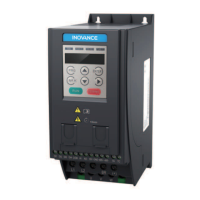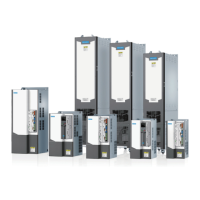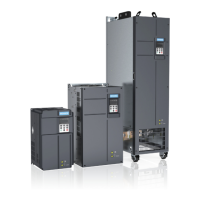Communication
‑701‑
To implement the function of the parameter in group F, change the high‑order F of
the parameter address to 0. To implement the function of the parameter in group A,
change the high‑order A of the parameter address to 4.
The parameter addresses are expressed as follows:
High‑order bytes: 00 to 0F (group F) and 40 to 4F (group A)
Low‑order bytes: 00 to FF
Example:
If parameter F3‑12 is not stored into EEPROM, the address is expressed as 030C. If
parameter A0‑05 is not stored into EEPROM, the address is expressed as 4005. This
address indicates that the parameter can only be written to RAM, and is invalid when
being read.
The following table lists some stop/run parameters.
Para. Address
Description
Para. Address
Description
1000H
*Communication (decimal)
‑10000 to +10000
1010H
PID reference
1001H
Running frequency
1011H
PID feedback
1002H
Bus voltage
1012H PLC process
1003H
Output voltage
1013H
Pulse input frequency
(basic unit: 0.01 kHz)
1004H Output current 1014H
Feedback speed (basic
unit: 0.1 Hz)
1005H Output power 1015H
Remaining running time
1006H Output torque 1016H
AI1 voltage before
correction
1007H
Running speed
1017H
AI2 voltage before
correction
1008H
DI input indication
1018H
AI3 voltage before
correction
1009H
DO output indication
1019H
Linear speed
100AH
AI1 voltage
101AH
Current power‑on time
100BH
AI2 voltage
101BH
Current running time
100CH
AI3 voltage
101CH
Pulse input frequency
(basic unit: 1 Hz)
100DH
Count value input
101DH
Current communication
(read‑only)
100EH
Length value input
101EH
Actual feedback speed
100FH
Load speed
101FH
Display of main
frequency X
– –
1020H
Display of auxiliary
frequency Y

